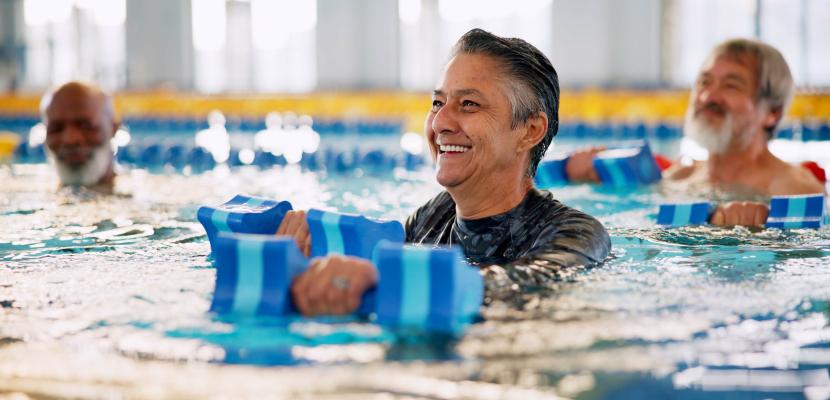
How does exercise boost energy?
At its core, exercise is like flipping on a biological power switch. When you move your body, your heart rate rises, pumping more oxygen-rich blood to your muscles and brain.
This oxygen delivery helps mitochondria, the energy factories in your cells, produce more ATP, the molecule that powers everything from blinking to brain function.
A 2024 meta-analysis confirmed that even a single session of exercise can improve energy levels and reduce fatigue almost immediately, thanks to the rise in endorphins and improved oxygenation.
Over time, regular activity enhances cardiovascular efficiency and improves how your body uses energy, making everyday tasks feel easier and less draining.
So instead of costing you energy, exercise teaches your body how to make more of it, both immediately and in the long run.
How does exercise impact energy levels in the short and long term?
Think of short-term energy as the mental and physical "buzz" you get right after a workout: elevated mood, improved focus, and a sense of invigoration.
This is largely thanks to brain chemicals like dopamine, serotonin, and endorphins, which increase rapidly during and after physical activity.
Long-term energy, on the other hand, is a slower build. It’s what happens when your body becomes stronger, your lungs more efficient, and your cells better at producing and managing ATP.
Research shows that consistent physical activity increases mitochondrial density and enhances glucose metabolism, two core processes that determine stamina and resistance to fatigue.
Does the type of exercise matter when it comes to energy?
Yes, and the best kind depends on what kind of energy you’re looking for.
Aerobic exercise, like brisk walking or cycling, is particularly good for delivering sustained, daily energy. It improves cardiorespiratory fitness, helps regulate mood, and reduces perceived fatigue, especially in sedentary adults.
Resistance training builds muscle, which increases resting metabolism and makes physical tasks less tiring. Though the immediate post-exercise boost might be less pronounced than with cardio, over time, it plays a key role in long-term energy.
Lower-intensity forms of exercise like yoga and tai chi can calm the nervous system, lower cortisol (your stress hormone), and enhance parasympathetic activity.
That kind of ‘calm energy’ can be just as valuable, especially when life feels mentally overwhelming.
What’s the best time of day to exercise for energy?
Timing your workout can fine-tune how energised you feel and when. For early risers, morning workouts can set the tone for the day, triggering a spike in alertness and positivity.
One study found that people who exercised in the morning reported better mood, improved sleep, and more stable energy throughout the day.
But night owls may feel more energised with afternoon or evening sessions. In fact, forcing a morning workout can sometimes lead to lower performance and reduced mood, especially in people with a later chronotype.
The takeaway? The ‘best’ time to work out is when your body feels most ready. Tune into your rhythm, and use exercise to enhance it, not fight against it.
Can short bouts of movement really boost energy like longer workouts?
They absolutely can. Science is increasingly showing that ‘movement snacks’, brief bursts of activity lasting 2–10 minutes, are powerful tools for keeping energy up throughout the day.
They help break up sedentary time, increase blood flow to the brain, and give your mood and focus a quick refresh.
A 2025 study found that splitting exercise into multiple shorter sessions throughout the day (rather than doing it all at once) provided similar or better energy and mood outcomes, with less perceived exertion.
Try dancing to one song while making dinner - these micro-movements add up, without draining your tank.
What’s the link between exercise and focus, or mood?
The connection is both immediate and cumulative. Even one bout of exercise has been shown to improve attention, reduce mental fatigue, and sharpen decision-making.
Over time, regular movement enhances memory, emotional regulation, and resilience to stress.
Exercise increases blood flow to the brain, especially in the prefrontal cortex, the region responsible for focus, planning, and problem-solving.
It also promotes the release of brain-derived neurotrophic factor (BDNF), a molecule that helps brain cells grow and connect more effectively.
How important is recovery?
It’s critical because exercise is a stressor, albeit a healthy one, and your body needs time to repair and adapt.
Without adequate recovery (which includes rest days, sleep, and proper nutrition), you risk tipping into overtraining, fatigue, and even mood disturbances.
Recovery allows your nervous system to reset and your muscles to rebuild stronger. As one review pointed out, chronic overtraining without sufficient rest can undermine energy production and lead to a dip in mood and motivation.
How do you start exercising when exhausted or time-poor?
When you're already running on empty, the idea of exercise can feel like just one more thing to do. But the trick is to start where you are, not where you think you should be.
Low-intensity, short-duration activity is the best on-ramp. Try gentle yoga, a 5-minute walk, or stretching while watching TV.
These small doses are enough to trigger feel-good brain chemicals without causing an energy crash. In fact, one study showed that even short, moderate-intensity sessions led to improvements in mood and vitality among exhausted adults.
Start small, stay consistent, and let your energy build from there.
- Dr Neil Chapman is the Associate Dean of Clinical Services at Bond University’s Faculty of Health Sciences & Medicine.